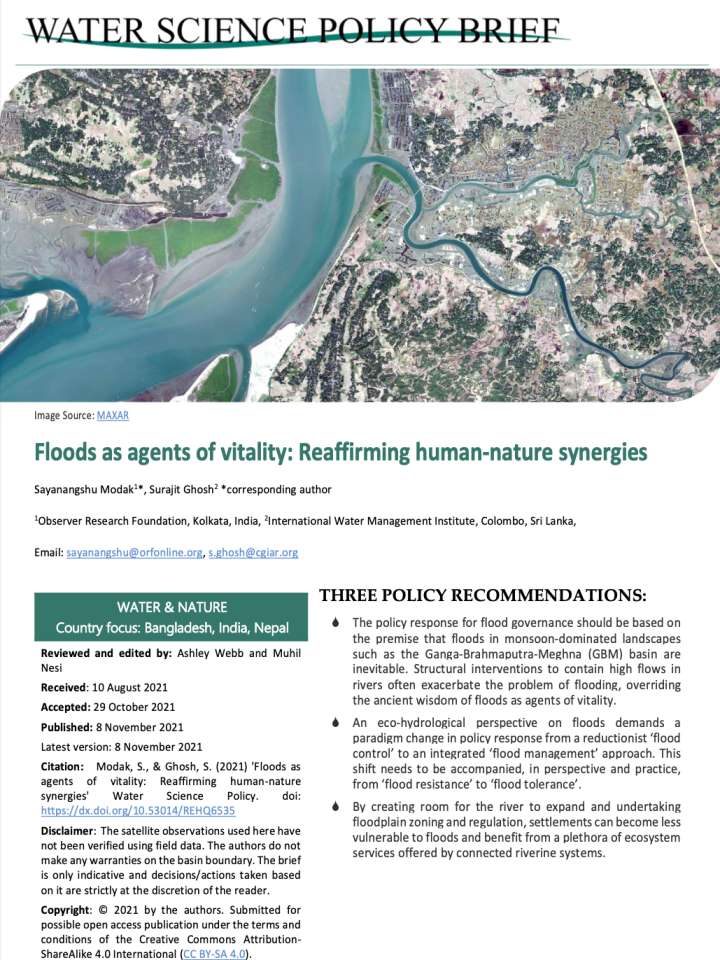Floods as agents of vitality: Reaffirming human-nature synergies
This brief tries to establish an eco-hydrological perspective on floods. It suggests devising a policy response which considers four dimensions of hydrological interactions within the river-floodplain ecosystems – lateral, longitudinal, vertical and temporal. It elaborates on the wide variety of ecosystem services derived from connected riverscapes. These include water security, food security, water purification and soil formation amongst others. South Asia is no stranger to floods - the region’s Ganga-Brahmaputra-Meghna (GBM) basin experiences flooding with clockwork regularity. Despite the inevitability and importance of high flows for riparian communities, centuries of use of structural interventions have sought to contain them.
The paper concludes with three policy recommendations:
- The policy response for flood governance should be based on the premise that floods in monsoon-dominated landscapes such as the Ganga-Brahmaputra-Meghna (GBM) basin are inevitable. Structural interventions to contain high flows in rivers often exacerbate the problem of flooding, overriding the ancient wisdom of floods as agents of vitality.
- An eco-hydrological perspective on floods demands a paradigm change in policy response from a reductionist ‘flood control’ to an integrated ‘flood management’ approach. This shift needs to be accompanied, in perspective and practice, from ‘flood resistance’ to ‘flood tolerance’.
- By creating room for the river to expand and undertaking floodplain zoning and regulation, settlements can become less vulnerable to floods and benefit from a plethora of ecosystems services offered by connected riverine systems.
Explore further
